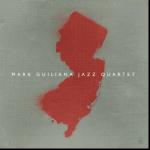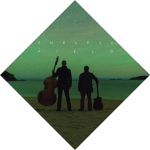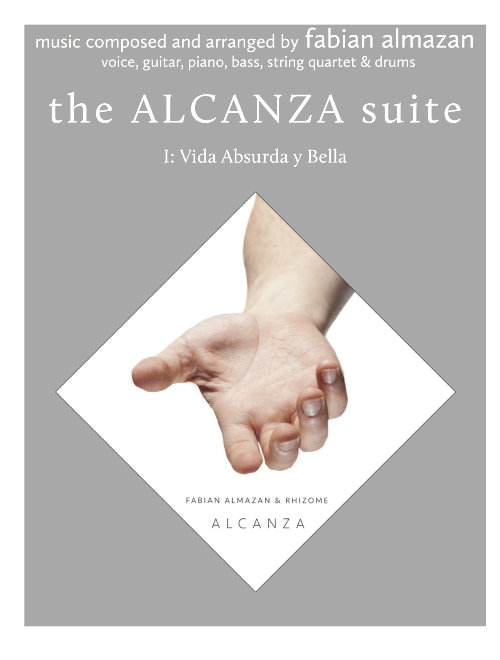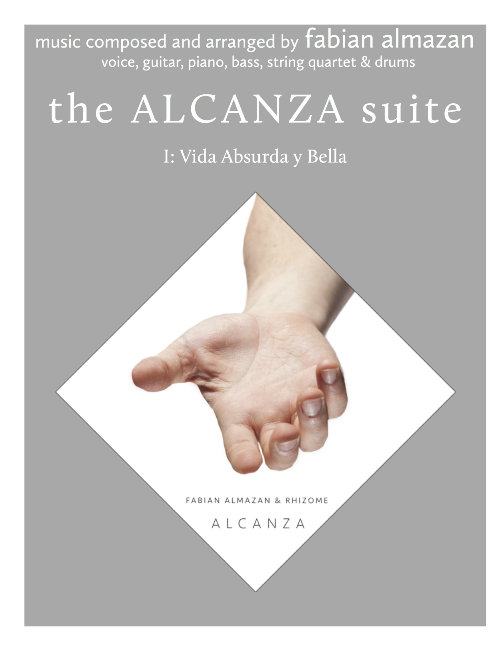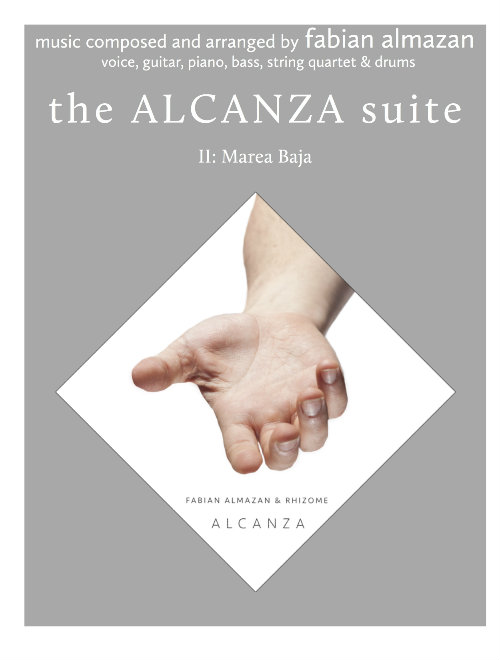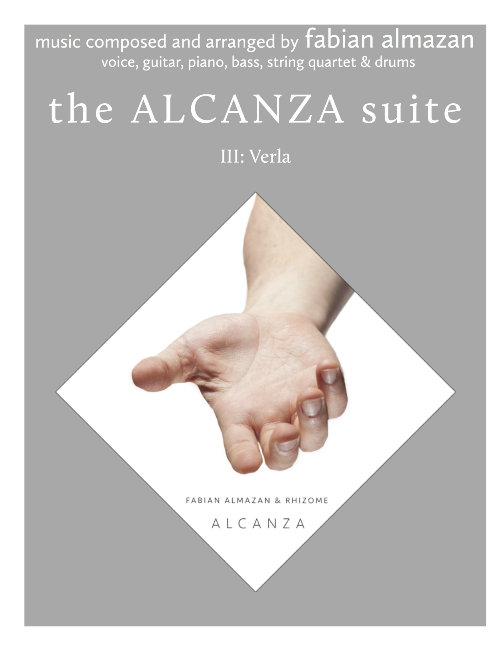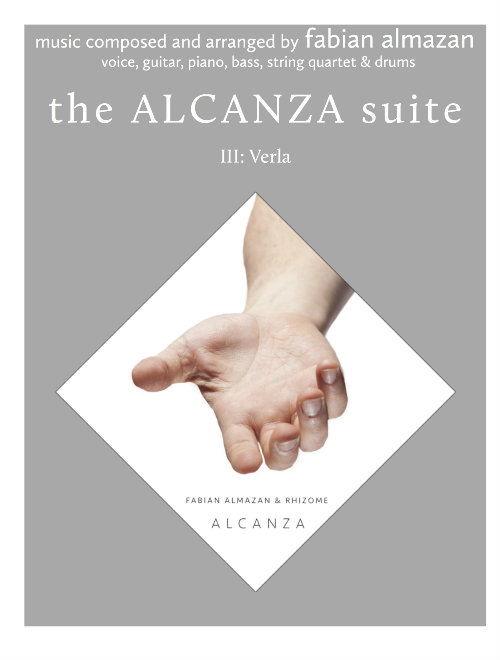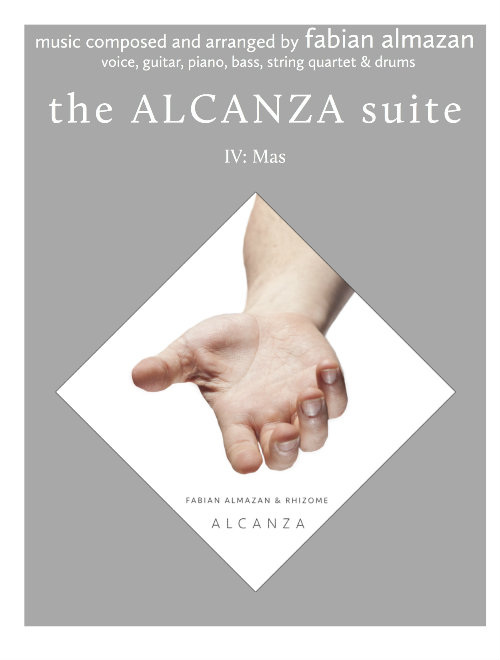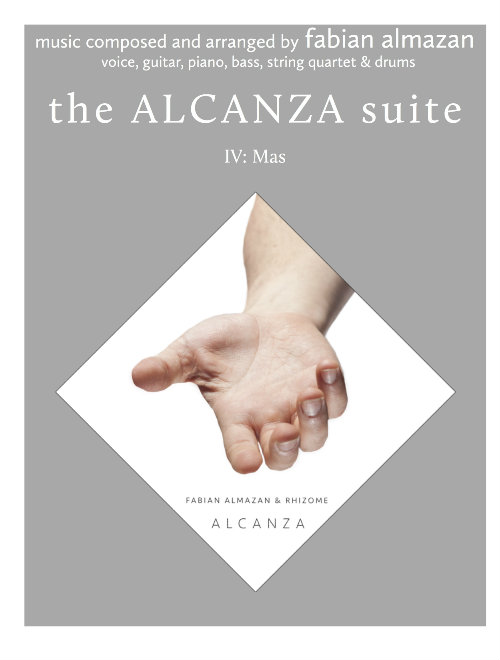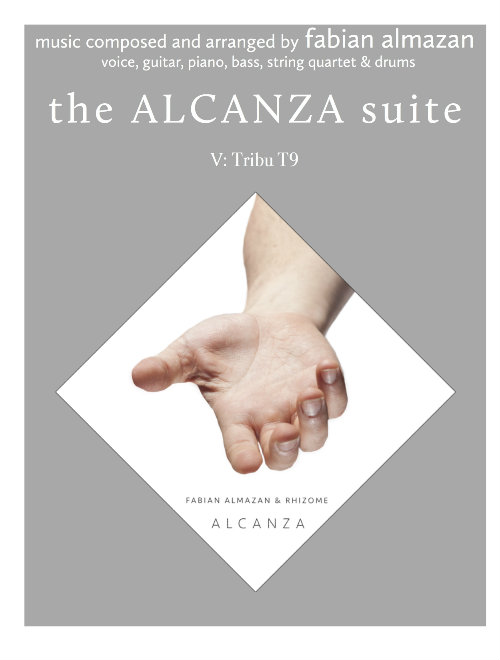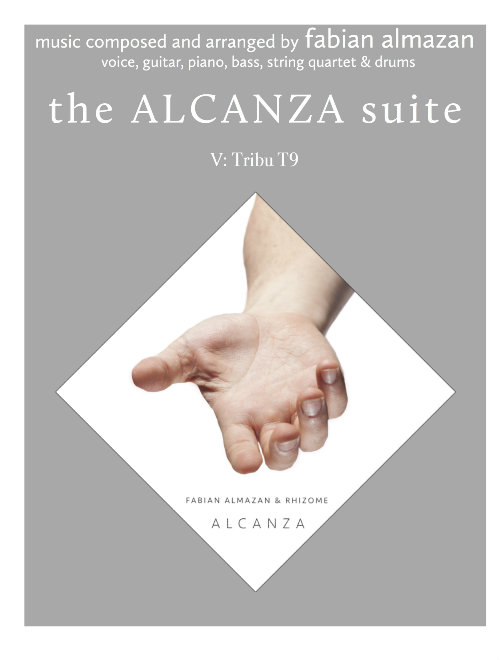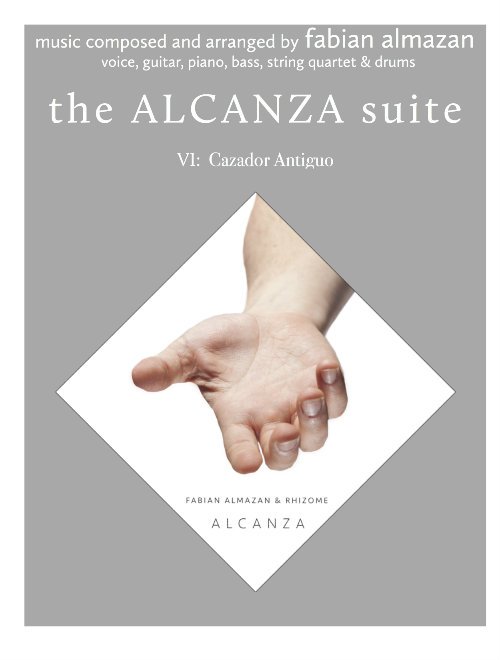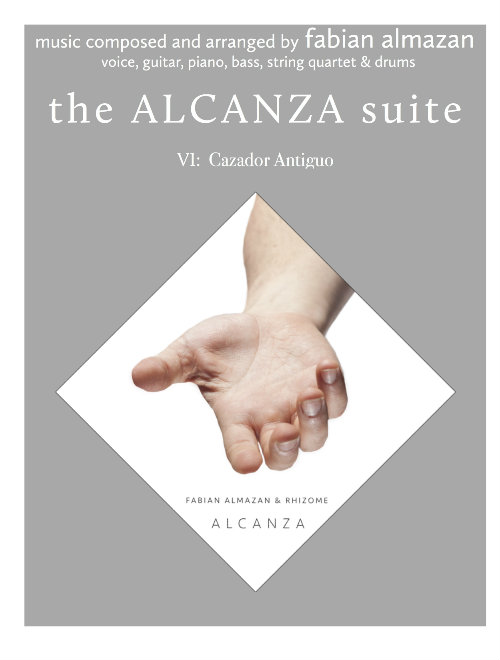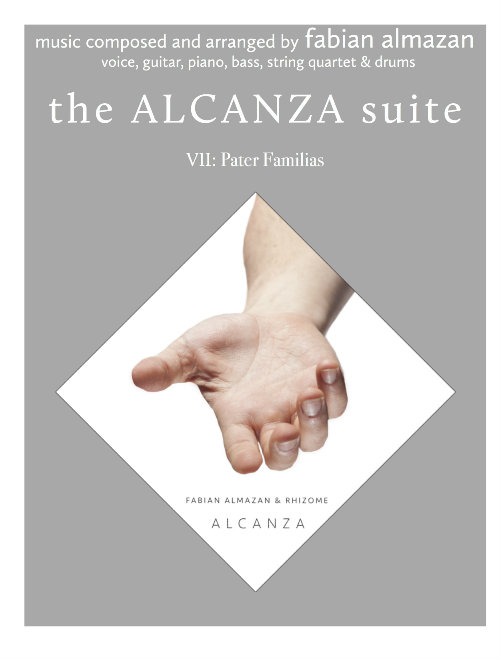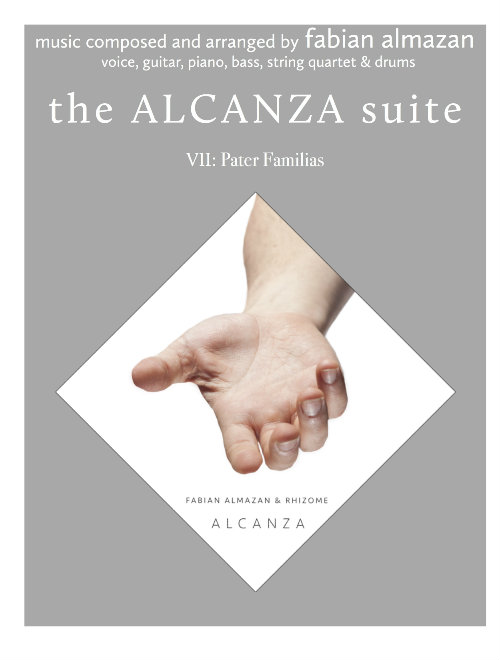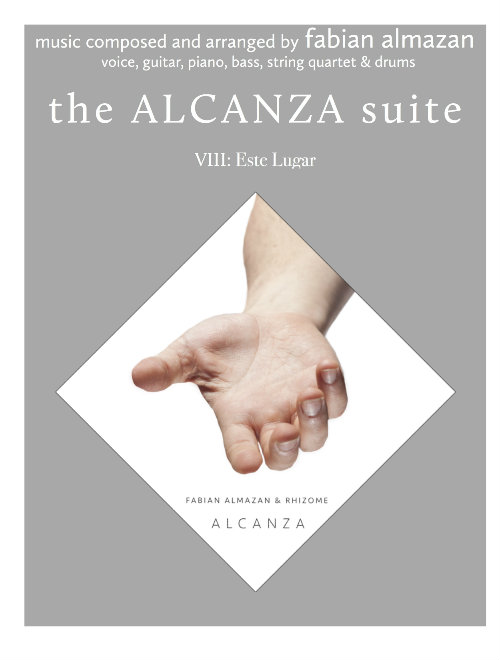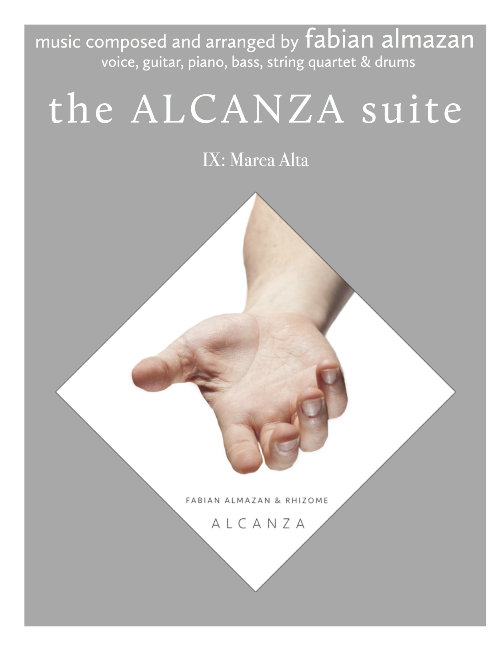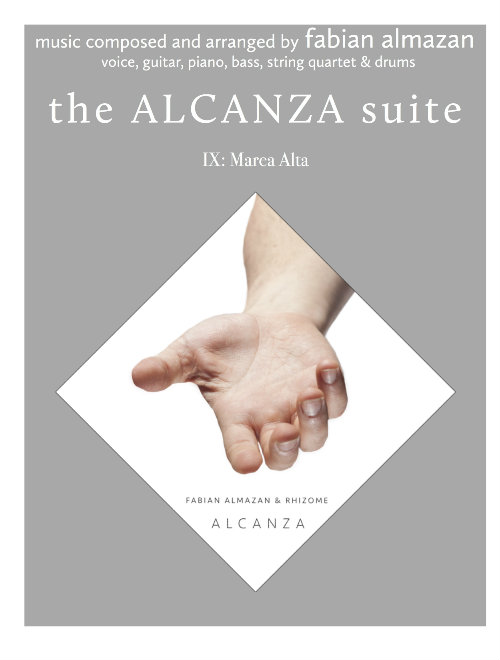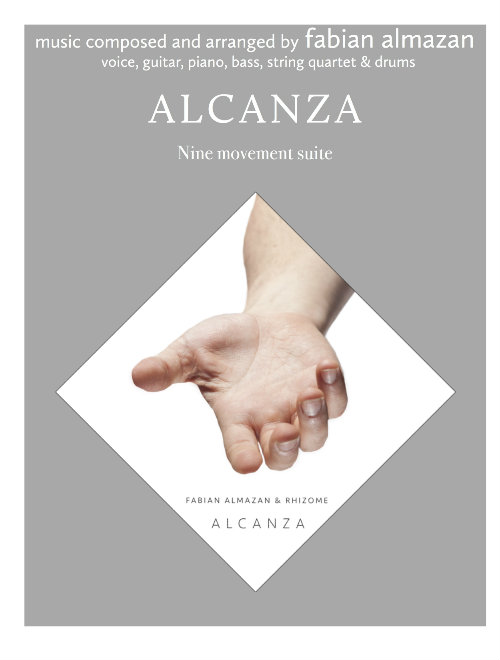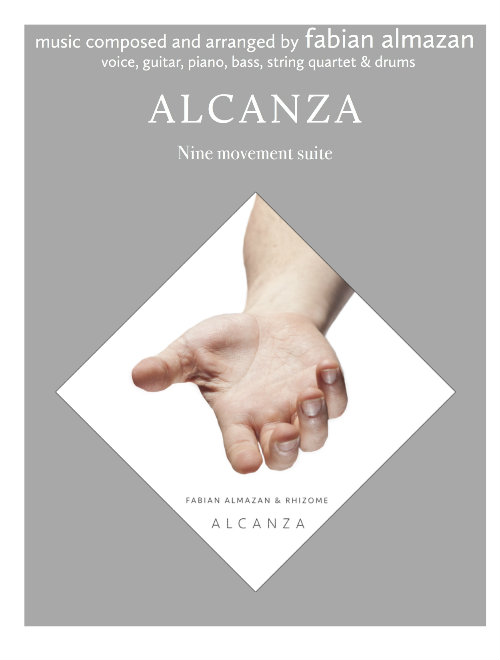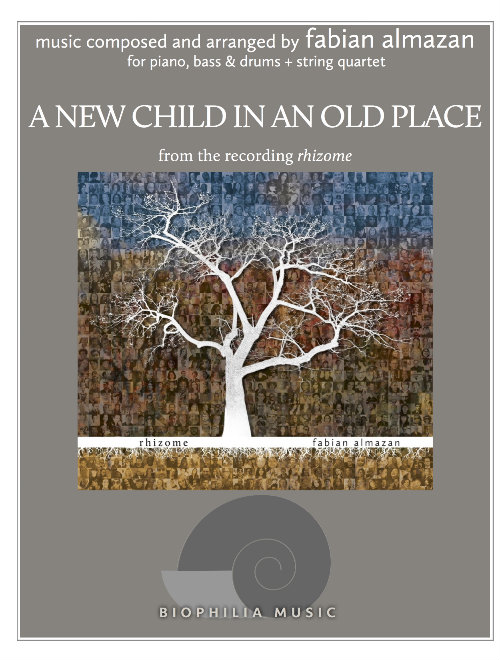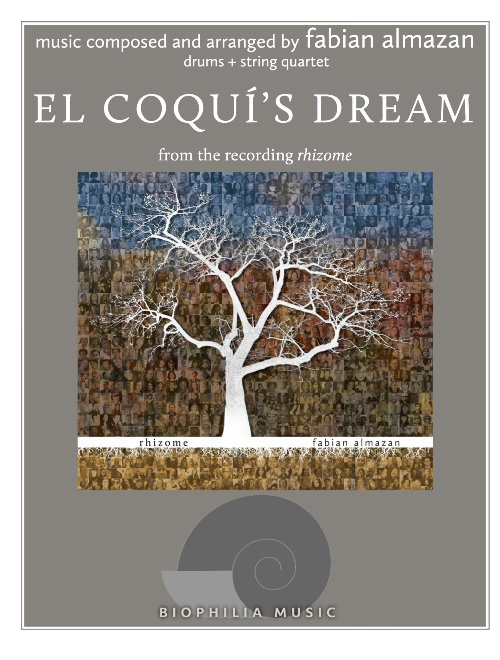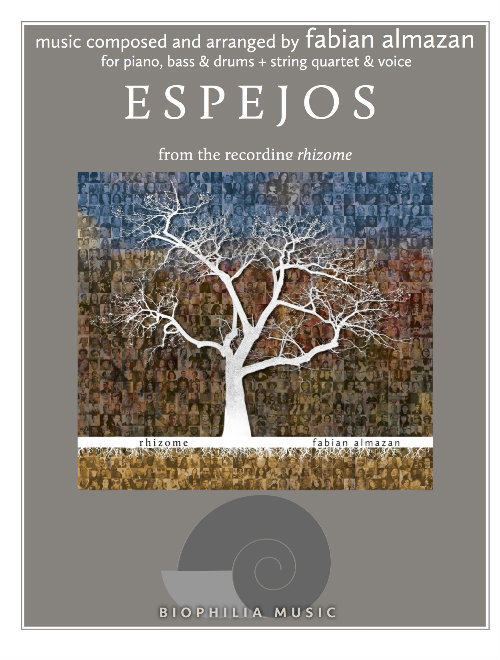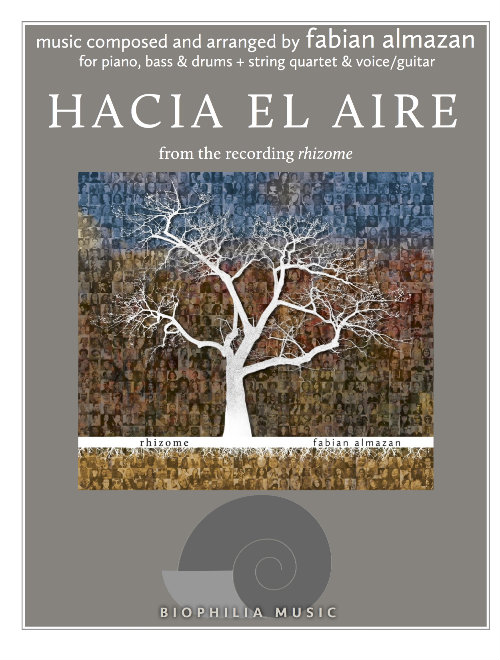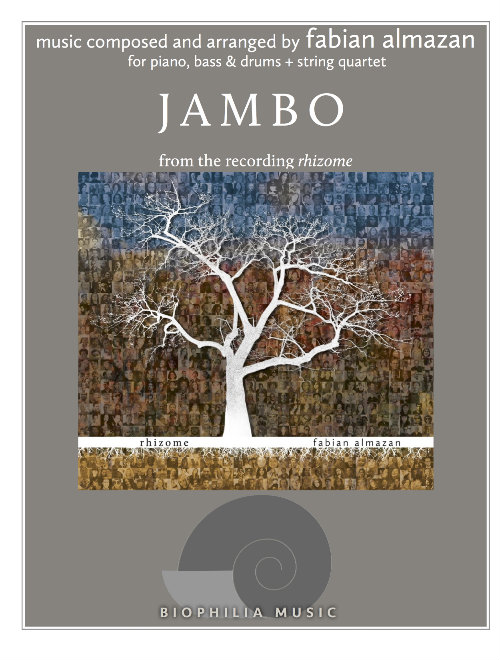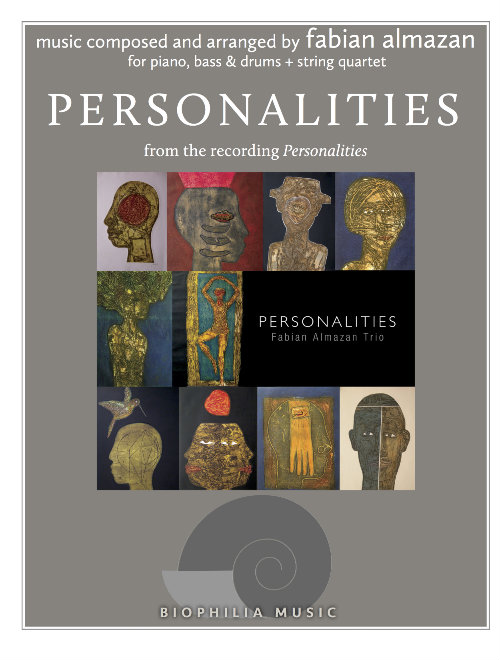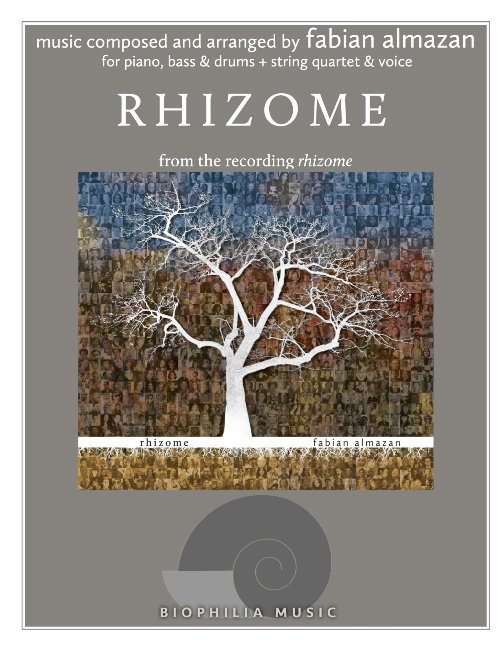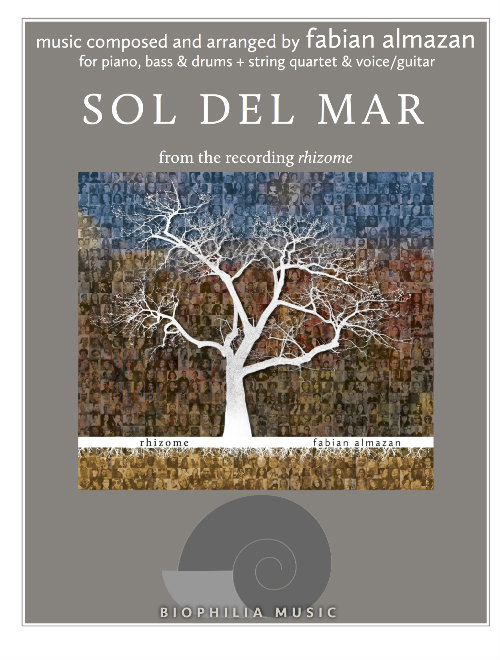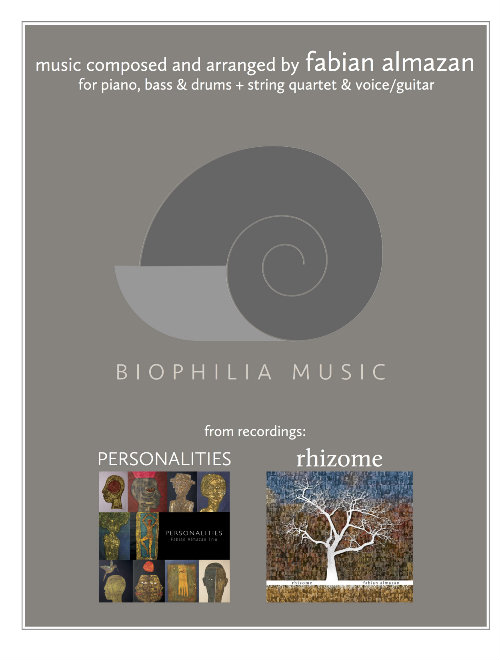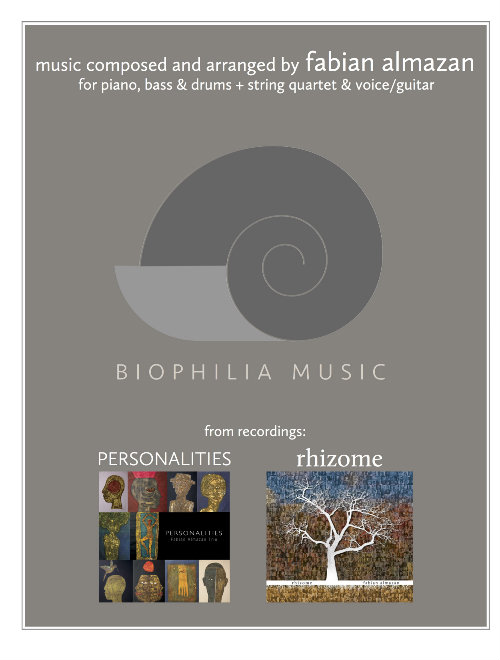RHIZOME
The Cuban-born pianist Fabian Almazan is moving quickly. On his first album, “Personalities,” from two years ago, he showed that he was serious about piano-trio music as well as how to add string-quartet arrangements to tightly woven jazz without making a mess. On “Rhizome,” coming out later this month from Blue Note/ArtistShare, he’s gone further into making hybrid composed-improvised music —
Ben RatliffNew York Times
read moreIf the two albums are emblematic of any trend, they reveal a generation of musicians with training in jazz, classical and other styles successfully chipping away at the walls between genres and cultures, or simply enjoying freedoms afforded by natural decay. Both CDs feature vocalists and original lyrics, integrated within mostly instrumental frameworks in ways that also suggest the erosion of the lines between sung songs and small-ensemble jazz compositions....
Larry BlumenfeldWall Street Journal
read moreAs both a composer and pianist, Fabian Almazan masterfully manipulates a balance between lyricism and tension. His second disc is rich with moments of heart-swelling beauty roiled with subtle dissonances that promote stunning, continuously unfolding harmonic growth. Rhizome is a tender and transporting set of chamber pieces borrowing from jazz, modern classical and echoes of the artist’s Cuban heritage. It’s a sound both joyful and achingly poignant.
Jeff PotterDownbeatThis album is about so much more than Almazan's gifts as an improviser and instrumentalist. Rhizome is too diverse to be called a concept album. But it is a single arc, a deep personal reflection on our present moment. His work with Terence Blanchard has revealed him as a brilliantly expressive pianist. But the complexity of subject matter on Rhizome...
Thomas ConradJazz Times
read morePianist Fabian Almazan took the stage for his first set of the night at New York’s Village Vanguard on Aug. 15 without a word. With his septet, consisting of a rhythm section and string quartet, he launched into a lush and languid version of “Stormy Weather.” His striking arrangement of the standard also appears on his gorgeous new album, Rhizome (ArtistShare/Blue Note). How many times had that song been played in the cramped and hallowed hall over the years?
Kurt GottschalkDownbeat Magazine
read moreAround the midpoint of his first set at the Village Vanguard on Wednesday night, the pianist Fabian Almazan paused to explain the title of his most recent album, “Rhizome.” He touched on the botanical definition of the word, a rootstock from which multiple shoots typically emerge. Then he drew a parallel to humankind, saying that for all our differences, and “the violence in the world,” a core commonality lurks under the surface.
Nate ChinenNew York Times
read moreMr. Almazan, placid and serious, immersed in sound, the kind of musician who's more fascinated by text than context, was born in Havana, the son of the bass player Rafael Almazán. His family moved briefly to Mexico when he was 9, then sought political asylum in the United States, settling in Miami. In Mexico he started piano lessons, and in Miami his parents bought a piano
Ben RatliffNew York Times
read more"Some days I love this city, and some days I hate it," said pianist Fabian Almazan, sounding every bit the typical New Yorker. Now 27, he's lived here for nearly nine years, having arrived to attend the Manhattan School of Music. He recalled the displacement he felt at age 9, when his family left Havana, Cuba, arriving first in Mexico and then, six months later, in Miami, seeking political asylum. "It was a hard adjustment, really jarring," he said.
Pianist Fabian Almazan starts a six-night run at the Village Vanguard on Tuesday. Today, the living room of his Hamilton Heights apartment looks much like any young musician's, an orderly sprawl of instruments, technology and sheet music surrounding an upright piano.
Larry BlumenfeldWall Street Journal
read more[Top Live Shows of 2012]
FABIAN ALMAZAN Sullivan Hall, Jan. 7. A young jazz pianist with a precise and fully formed sound, a great rhythm section (Linda Oh on bass, Henry Cole on drums) and a string quartet: tight and alert, it devoured its material, including his originals and a version of Shostakovich’s String Quartet No. 10.
Ben RatliffNew York Times
read moreI would bet that a lot of listeners — the festival sold out, with around 2,000 each night — were rooted to the spot, as they were probably hearing for the first time the pianist Fabian Almazan’s intense and crystalline trio music, sometimes augmented by a string quartet (a version of Shostakovich’s String Quartet No. 10 was a total ear-opener)
Ben RatliffNew York Times
read moreThe Cuban-born, New York-based pianist and composer Fabian Almazan, 27, is developing the sort of career most young jazz musicians can’t fathom. Since 2007 he’s held the piano chair in the revered Terence Blanchard Quintet; when we speak for this piece, he’s just wrapped a wildly successful week headlining the Village Vanguard, in support of his acclaimed debut album, Personalities (Biophilia). “It was a dream come true,” he says of the gigs, which featured his trio with bassist Linda Oh and drummer Henry Cole, plus a string quartet. (He will return to the club with Oh and Cole Feb. 21-26.) “Everybody was really encouraging, and I learned a lot.”
Blanchard speaks of him in less modest terms. “Fabian is probably one of the great young talents of his generation,” the trumpeter says. “Once people really hear what he’s about and what he’s doing, they’re gonna be enriched.”
Certainly the notices Almazan’s received from his trio CD and live appearances bear out Blanchard’s prediction. So does his sound: a polished, careful touch that hints at his Latin heritage (particularly when he plays songs from the Cuban repertoire), but utilizes the angular rhythms and advanced harmony of 21st-century jazz. If he gets his way, however, audiences will be enriched by him in another way. Almazan’s ambitions include not only the concert stage and recording studio, but the silver screen as well. “Right now I find myself listening to a lot of film music,” he says. “I’m becoming very interested in, sonically, what can happen with recorded music and film. That’s kind of what I’ve been experimenting with.”
Jazz musicians writing for film is nothing new.
Michael J. WestJazz Times
read more27-year-old pianist Fabian Almazan dispels any idea that he’s pursuing a conventional path with his debut album pretty quickly. Though taking a run at classical music isn’t too surprising in jazz’s musically omnivorous universe, Almazan’s approach is as his piano gives way to delicate strings, which are slowly squelched and melted down into a wash of effects and percussion until the song resembles something from Radiohead’s wheelhouse before the melody returns with an unruffled grace.
Chris BartonLA Times
read moreFabian Almazan began creating some buzz with his sparkling piano chops in trumpeter Terence Blanchard's group on Choices (Concord Music Group, 2009). Originally from Havana, Cuba, Almazan is not only one of the young rising stars in New York, but is also classically trained and has received a number of awards as a composer in film, chamber and orchestral projects.
Mark TurnerAll About Jazz
read moreThe Cuban-born, New York-based pianist and composer Fabian Almazan, 27, is developing the sort of career most young jazz musicians can’t fathom. Since 2007 he’s held the piano chair in the revered Terence Blanchard Quintet; when we speak for this piece, he’s just wrapped a wildly successful week headlining the Village Vanguard, in support of his acclaimed debut album, Personalities (Biophilia). “It was a dream come true,” he says of the gigs, which featured his trio with bassist Linda Oh and drummer Henry Cole, plus a string quartet. (He will return to the club with Oh and Cole Feb. 21-26.) “Everybody was really encouraging, and I learned a lot.”
Blanchard speaks of him in less modest terms. “Fabian is probably one of the great young talents of his generation,” the trumpeter says. “Once people really hear what he’s about and what he’s doing, they’re gonna be enriched.”Michael J. WestJazz Times
read more
Personalities
Much like the best of his contemporaries, Mr. Almazan revels in the space between musical styles, and between form and improvisation. As Ms. Oh explained, "What he gives us on the page isn't necessarily what we have to do. He wants us on the same page in a deeper sense." Mr. Almazan's new CD is meant, he said, "to reflect the people I've encountered in my life." These include strangers overheard on the street and his mother, as captured in the old snapshot from Havana that inspired a poignant original ballad, "Una Foto." What he achieves is personal, based on reflection, the sound of a man finding his place in a world that, musically speaking, can defy borders.
Larry BlumenfeldWall Street Journal
read moreCaptivating young pianist Fabian Almazan has shown his mettle as a sideman with Terence Blanchard, Ambrose Akinmusire and others. In the latter half of 2011 he debuted as a leader with Personalities and appeared on Crosby Street, the worthy maiden voyage of tenor saxophonist Jake Saslow.
Personalities offers the fuller view of Almazan’s musicianship and artistic vision. The album begins out of left field, with a reworking of the third movement of Shostakovich’s String Quartet no. 10. Almazan supplements his trio (bassist Linda Oh and drummer Henry Cole) with a full string quartet and alters the soundscape further with electronics, making the music whoosh and dive and bend in the oddest ways. Gradually the electronic haze becomes a roar, eclipsing all else. But after a quiet break, the string quartet dominates for a long four minutes until the end. It’s a courageous opener and yet Almazan quickly puts the electronics aside. He switches to Rhodes for the trio number “H.U.G.s (Historically Underrepresented Groups)”, highlighting the taut yet flexible interplay between Oh and Cole that will dominate the album. The string quartet does return, however, for the title track, a nine-minute original with a bold, romantic sweep, yet none of the sheer eccentricity of the first cut. Almazan sings on his instrument, whether he’s surging on the fast tempos of “The Vicarious Life” and “Russian Love Story” or mining a dark and moody ballad like the 6/4 “Grandmother Song”. He also delves into his Cuban heritage with Carlos Varela’s “Bola de Nieve” and Antonio María Romeu’s “Tres Lindas Cubanas” - the latter complete with pops and cracks of old vinyl to affect a vintage danzón.
David R. AdlerNew York City Jazz Record
read moreCaptivating young pianist Fabian Almazan has shown his mettle as a sideman with Terence Blanchard, Ambrose Akinmusire and others. In the latter half of 2011 he debuted as a leader with Personalities and appeared on Crosby Street, the worthy maiden voyage of tenor saxophonist Jake Saslow.
Personalities offers the fuller view of Almazan’s musicianship and artistic vision. The album begins out of left field, with a reworking of the third movement of Shostakovich’s String Quartet no. 10. Almazan supplements his trio (bassist Linda Oh and drummer Henry Cole) with a full string quartet and alters the soundscape further with electronics, making the music whoosh and dive and bend in the oddest ways. Gradually the electronic haze becomes a roar, eclipsing all else. But after a quiet break, the string quartet dominates for a long four minutes until the end. It’s a courageous opener and yet Almazan quickly puts the electronics aside. He switches to Rhodes for the trio number “H.U.G.s (Historically Underrepresented Groups)”, highlighting the taut yet flexible interplay between Oh and Cole that will dominate the album. The string quartet does return, however, for the title track, a nine-minute original with a bold, romantic sweep, yet none of the sheer eccentricity of the first cut. Almazan sings on his instrument, whether he’s surging on the fast tempos of “The Vicarious Life” and “Russian Love Story” or mining a dark and moody ballad like the 6/4 “Grandmother Song”. He also delves into his Cuban heritage with Carlos Varela’s “Bola de Nieve” and Antonio María Romeu’s “Tres Lindas Cubanas” - the latter complete with pops and cracks of old vinyl to affect a vintage danzón. Sonic creativity abounds on Personalities, but there’s a bit too much reliance on flowing, spiraling harmonies in irregular meters, a common sound these days.
Jake Saslow’s Crosby Street finds Almazan in a more limited role, playing behind the able tenorist on four out of seven tracks. He doesn’t get a solo on “Early Riser”, but he fills out dreamy chords and doubles melodies and basslines, supporting guitarist Mike Moreno and bassist Joe Martin respectively. On “Taiga Forest”, however, Almazan solos first; he’s also prominent at the start of the tune with dissonant high- register clusters and motives under Saslow and Moreno’s unison theme. The pianist is also strong on the fast-paced title track and the straight-eighth ballad “How Things Were”, locking in creatively with Martin and drummer Marcus Gilmore. Saslow, for his part, does admirably with Horace Silver’s “Lonely Woman”, opting for a chordless trio format that shows off his rich tone and skillful pacing. But the finest thing on the record is the closing “Until Next Time” (without Almazan). The mood here, even the instrumentation to a degree, brings to mind Joe Lovano with Bill Frisell and Paul Motian (if one imagines Martin in the role of Charlie Haden). It’s a moment that promises even better records to come from this rising horn player and New York native.
David R. AdlerNew York City Jazz Record
read moreIf Shostakovich's third movement speaks of Almazan's interpretative daring then "The Vicarious Life" shouts his virtuosity as the trio works through the track's dizzying cadence. Almazan plays like a man possessed, at times flamboyantly, yet with masterful control, while his equally competent trio mates have their own bright moments such as Cole's intro on "H.U.Gs (Historically Under-Represented Groups)" and Oh's punchy solo in "Russian Love Story."
Mark F. TurnerAllAboutJazz.com
read moreCaptivating young pianist Fabian Almazan has shown his mettle as a sideman with Terence Blanchard, Ambrose Akinmusire and others. In the latter half of 2011 he debuted as a leader with Personalities and appeared on Crosby Street, the worthy maiden voyage of tenor saxophonist Jake Saslow.
Personalities offers the fuller view of Almazan’s musicianship and artistic vision. The album begins out of left field, with a reworking of the third movement of Shostakovich’s String Quartet no. 10. Almazan supplements his trio (bassist Linda Oh and drummer Henry Cole) with a full string quartet and alters the soundscape further with electronics, making the music whoosh and dive and bend in the oddest ways. Gradually the electronic haze becomes a roar, eclipsing all else. But after a quiet break, the string quartet dominates for a long four minutes until the end. It’s a courageous opener and yet Almazan quickly puts the electronics aside. He switches to Rhodes for the trio number “H.U.G.s (Historically Underrepresented Groups)”, highlighting the taut yet flexible interplay between Oh and Cole that will dominate the album. The string quartet does return, however, for the title track, a nine-minute original with a bold, romantic sweep, yet none of the sheer eccentricity of the first cut. Almazan sings on his instrument, whether he’s surging on the fast tempos of “The Vicarious Life” and “Russian Love Story” or mining a dark and moody ballad like the 6/4 “Grandmother Song”. He also delves into his Cuban heritage with Carlos Varela’s “Bola de Nieve” and Antonio María Romeu’s “Tres Lindas Cubanas” - the latter complete with pops and cracks of old vinyl to affect a vintage danzón. Sonic creativity abounds on Personalities, but there’s a bit too much reliance on flowing, spiraling harmonies in irregular meters, a common sound these days.
David R. AdlerNew York City Jazz Record
read moreOther Press
Pianist Fabian Almazan took the stage for his first set of the night at New York’s Village Vanguard on Aug. 15 without a word. With his septet, consisting of a rhythm section and string quartet, he launched into a lush and languid version of “Stormy Weather.” His striking arrangement of the standard also appears on his gorgeous new album, Rhizome (ArtistShare/Blue Note). How many times had that song been played in the cramped and hallowed hall over the years?
Kurt GottschalkDownbeat Magazine
read moreAround the midpoint of his first set at the Village Vanguard on Wednesday night, the pianist Fabian Almazan paused to explain the title of his most recent album, “Rhizome.” He touched on the botanical definition of the word, a rootstock from which multiple shoots typically emerge. Then he drew a parallel to humankind, saying that for all our differences, and “the violence in the world,” a core commonality lurks under the surface.
Nate ChinenNew York Times
read moreMr. Almazan, placid and serious, immersed in sound, the kind of musician who's more fascinated by text than context, was born in Havana, the son of the bass player Rafael Almazán. His family moved briefly to Mexico when he was 9, then sought political asylum in the United States, settling in Miami. In Mexico he started piano lessons, and in Miami his parents bought a piano
Ben RatliffNew York Times
read more"Some days I love this city, and some days I hate it," said pianist Fabian Almazan, sounding every bit the typical New Yorker. Now 27, he's lived here for nearly nine years, having arrived to attend the Manhattan School of Music. He recalled the displacement he felt at age 9, when his family left Havana, Cuba, arriving first in Mexico and then, six months later, in Miami, seeking political asylum. "It was a hard adjustment, really jarring," he said.
Pianist Fabian Almazan starts a six-night run at the Village Vanguard on Tuesday. Today, the living room of his Hamilton Heights apartment looks much like any young musician's, an orderly sprawl of instruments, technology and sheet music surrounding an upright piano.
Larry BlumenfeldWall Street Journal
read more[Top Live Shows of 2012]
FABIAN ALMAZAN Sullivan Hall, Jan. 7. A young jazz pianist with a precise and fully formed sound, a great rhythm section (Linda Oh on bass, Henry Cole on drums) and a string quartet: tight and alert, it devoured its material, including his originals and a version of Shostakovich’s String Quartet No. 10.
Ben RatliffNew York Times
read moreI would bet that a lot of listeners — the festival sold out, with around 2,000 each night — were rooted to the spot, as they were probably hearing for the first time the pianist Fabian Almazan’s intense and crystalline trio music, sometimes augmented by a string quartet (a version of Shostakovich’s String Quartet No. 10 was a total ear-opener)
Ben RatliffNew York Times
read moreThe Cuban-born, New York-based pianist and composer Fabian Almazan, 27, is developing the sort of career most young jazz musicians can’t fathom. Since 2007 he’s held the piano chair in the revered Terence Blanchard Quintet; when we speak for this piece, he’s just wrapped a wildly successful week headlining the Village Vanguard, in support of his acclaimed debut album, Personalities (Biophilia). “It was a dream come true,” he says of the gigs, which featured his trio with bassist Linda Oh and drummer Henry Cole, plus a string quartet. (He will return to the club with Oh and Cole Feb. 21-26.) “Everybody was really encouraging, and I learned a lot.”
Blanchard speaks of him in less modest terms. “Fabian is probably one of the great young talents of his generation,” the trumpeter says. “Once people really hear what he’s about and what he’s doing, they’re gonna be enriched.”
Certainly the notices Almazan’s received from his trio CD and live appearances bear out Blanchard’s prediction. So does his sound: a polished, careful touch that hints at his Latin heritage (particularly when he plays songs from the Cuban repertoire), but utilizes the angular rhythms and advanced harmony of 21st-century jazz. If he gets his way, however, audiences will be enriched by him in another way. Almazan’s ambitions include not only the concert stage and recording studio, but the silver screen as well. “Right now I find myself listening to a lot of film music,” he says. “I’m becoming very interested in, sonically, what can happen with recorded music and film. That’s kind of what I’ve been experimenting with.”
Jazz musicians writing for film is nothing new.
Michael J. WestJazz Times
read more27-year-old pianist Fabian Almazan dispels any idea that he’s pursuing a conventional path with his debut album pretty quickly. Though taking a run at classical music isn’t too surprising in jazz’s musically omnivorous universe, Almazan’s approach is as his piano gives way to delicate strings, which are slowly squelched and melted down into a wash of effects and percussion until the song resembles something from Radiohead’s wheelhouse before the melody returns with an unruffled grace.
Chris BartonLA Times
read moreFabian Almazan began creating some buzz with his sparkling piano chops in trumpeter Terence Blanchard's group on Choices (Concord Music Group, 2009). Originally from Havana, Cuba, Almazan is not only one of the young rising stars in New York, but is also classically trained and has received a number of awards as a composer in film, chamber and orchestral projects.
Mark TurnerAll About Jazz
read moreThe Cuban-born, New York-based pianist and composer Fabian Almazan, 27, is developing the sort of career most young jazz musicians can’t fathom. Since 2007 he’s held the piano chair in the revered Terence Blanchard Quintet; when we speak for this piece, he’s just wrapped a wildly successful week headlining the Village Vanguard, in support of his acclaimed debut album, Personalities (Biophilia). “It was a dream come true,” he says of the gigs, which featured his trio with bassist Linda Oh and drummer Henry Cole, plus a string quartet. (He will return to the club with Oh and Cole Feb. 21-26.) “Everybody was really encouraging, and I learned a lot.”
Blanchard speaks of him in less modest terms. “Fabian is probably one of the great young talents of his generation,” the trumpeter says. “Once people really hear what he’s about and what he’s doing, they’re gonna be enriched.”Michael J. WestJazz Times
read more


